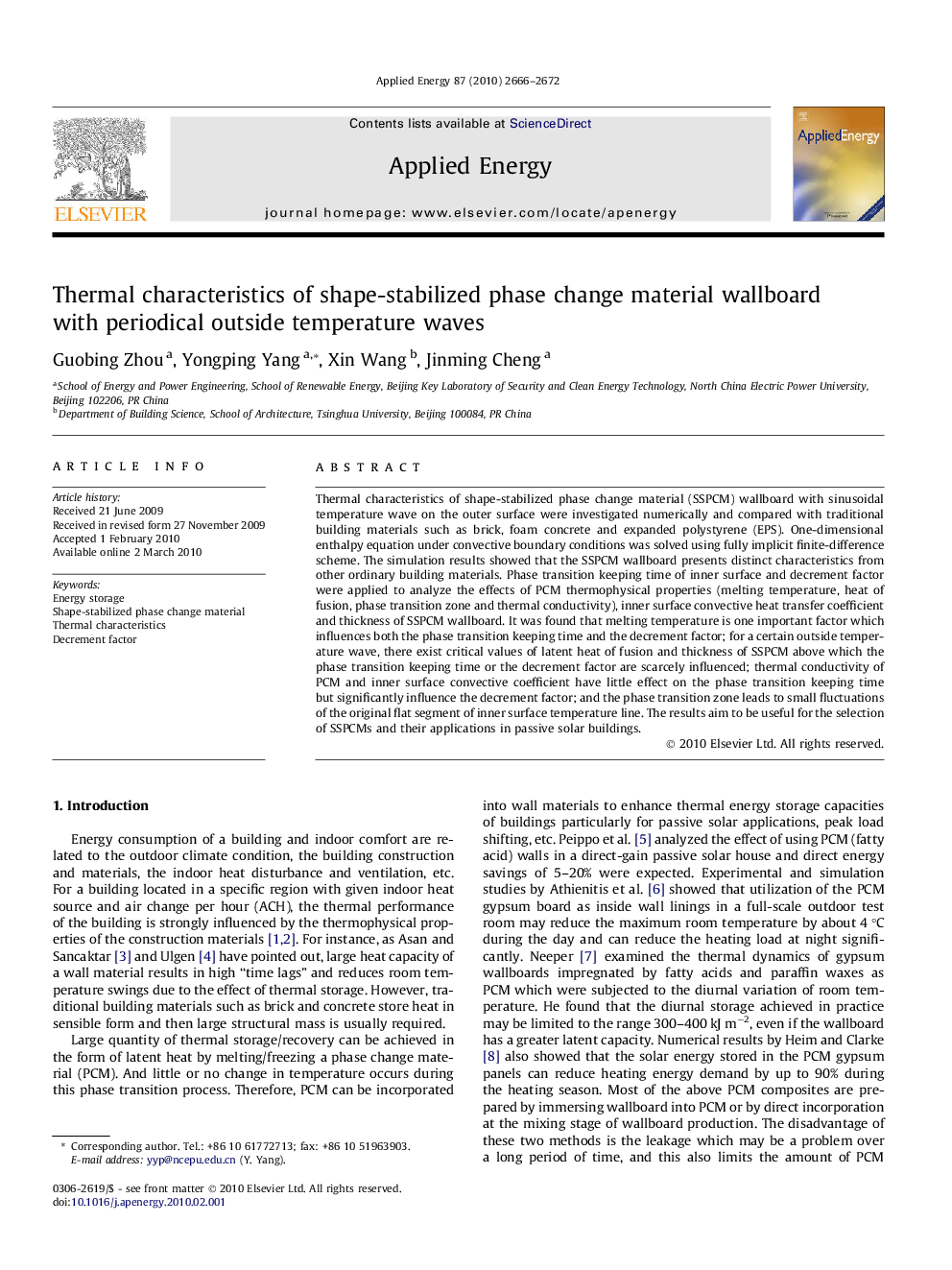| Article ID | Journal | Published Year | Pages | File Type |
|---|---|---|---|---|
| 244350 | Applied Energy | 2010 | 7 Pages |
Thermal characteristics of shape-stabilized phase change material (SSPCM) wallboard with sinusoidal temperature wave on the outer surface were investigated numerically and compared with traditional building materials such as brick, foam concrete and expanded polystyrene (EPS). One-dimensional enthalpy equation under convective boundary conditions was solved using fully implicit finite-difference scheme. The simulation results showed that the SSPCM wallboard presents distinct characteristics from other ordinary building materials. Phase transition keeping time of inner surface and decrement factor were applied to analyze the effects of PCM thermophysical properties (melting temperature, heat of fusion, phase transition zone and thermal conductivity), inner surface convective heat transfer coefficient and thickness of SSPCM wallboard. It was found that melting temperature is one important factor which influences both the phase transition keeping time and the decrement factor; for a certain outside temperature wave, there exist critical values of latent heat of fusion and thickness of SSPCM above which the phase transition keeping time or the decrement factor are scarcely influenced; thermal conductivity of PCM and inner surface convective coefficient have little effect on the phase transition keeping time but significantly influence the decrement factor; and the phase transition zone leads to small fluctuations of the original flat segment of inner surface temperature line. The results aim to be useful for the selection of SSPCMs and their applications in passive solar buildings.
